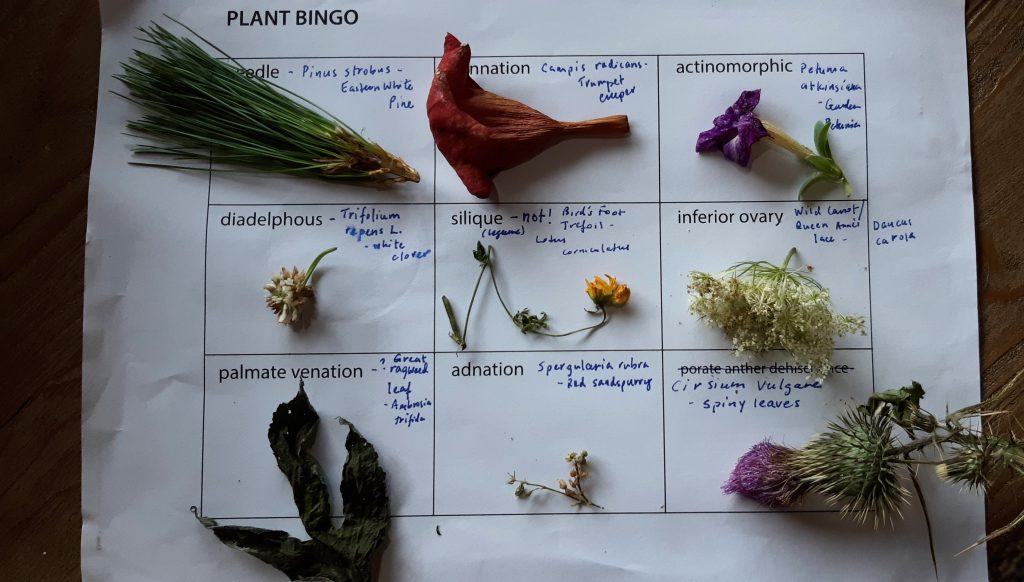I have been working on Plant Bingo as we drove north from Alabama to nothern Minnesota over the last few days for some planned summer travels – which has meant a lot of poking around in the areas at the fringes of the mowed grass at rest stops in Tennessee, Kentucky, Illinois, Wisconsin, and Minnesota itself.
That part works because I have a great interest in hardy plants that are often regarded as weeds that find their way into spaces that are difficult for any plant to thrive (while also being sensitive to the problematic nature of invasive species). These plants are particularly well-represented here. I have not found silique or porate anther dehiscence examples (that I could determine). I thought for a minute I had discovered a silique example, but, alas, that was not the case – but I went ahead and included the imposter.
These plants have not endured the miles well, but the problem kept getting worse rather than better as I tried to find new things only to have the previously collected things deterioriate more – so I decided to stop for the moment while I was behind – and go ahead and get this posted. I would love to hear suggestions about the best ways to store specimens collected in the field (plant press? bags? boxes? in water?)



That is a fun Bingo card Jennifer, thanks for sharing your plant encounters from your travels. They get the job done. For the thistle you might want to use: leaves finely bristly-dentate to coarsely dentate or 1–3 times pinnately lobed, teeth and lobes bristly-tipped. As far as keeping things moist when you are in the field. We often use a tubber ware container to keep things moist. Wrapping the flowers and leaves in a wet paper towels also works well and then storing it in a zip log bag for later use also is a good way to preserve the moisture. There should be some weeds in the Brassicaceae at the roadside for the siliques, with mainly yellow flowers, but perhaps past flowering so it bit more difficult to spot. The legume lacks the replum that the siliques and silicles have. I had just posted an image on the dissected siliques from Arabidopsis on Oona’s Bingo card post. Have a look.